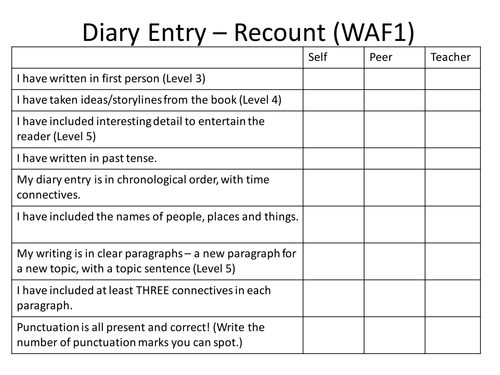The book of James contains a plethora of information for believers to become mature in their relationships to Christ. This series of five lessons will cover each chapter of James with the goal of outlining how we can become stronger in our faith. In part 1, “Strong and Wise,” there will be an emphasis on trusting God’s plan, persevering through difficulties, and obeying the bible. In addition, several opportunities for the teacher to share how God has worked in his or her life will bring the scripture to life for the children in a practical way.
TARGET AGES: 9-12
This lesson is part of our five unit study on the book of James for Older Elementary children. Use the following links to navigate to the other sections ONE — TWO — THREE — FOUR — FIVE — COLORING PAGE
OBJECTIVE: To introduce the book of James and discuss ways to become mature and wise Christ-followers.
MAIN IDEA: To become a strong and wise believer, we must trust God’s plan, persevere, and obey the bible.
SCRIPTURE PASSAGES: James 1:5-8, 12, & 22-25
MATERIAL(S): paper with typed/written questions, pencils, white board or poster board, craft pattern (attachment), yellow foam craft sheets, markers, stickers, glitter glue, single hole punch, twine or yarn
——————————————————————————————————————-
Introduction (10 minutes)
OPENING PRAYER: “God, help us become stronger and wiser as Christians so we may better serve you. Amen.”
OPENING ACTIVITY: Ask the children to choose a partner to read James 1 out loud with one another. Give each pair a question sheet and pencil. Then ask the children to answer the questions as they read:
- Who was James (a servant of God and Jesus)?
- Who is to blame for our sin (we are)?
- What does God consider to be “pure” religion (looking after those in need and keeping ourselves from being polluted by the world)?
Go over the answers together as a class. Then say, “We have already learned a little bit about James, chapter 1. As we study this entire book, we will learn how to behave and grow as Christ-followers by relying on God.”
Lesson (15 minutes)
- Outline the history of the book’s author, James. Say, “This book was written by James, one of Jesus’ brothers. There were also two disciples named James, so it’s important to understand that it was Jesus’ brother who wrote this book and not one of the disciples.” Go on to explain that James was the lead pastor of the Jerusalem church, but it wasn’t until after Jesus had died and been resurrected that James became a believer. Ask, “Why do you think James didn’t believe in Jesus until after his resurrection (because they were siblings, so it must have seemed strange that Jesus was the Son of God)?” Explain that James’ book is about maturing as believers, so it gives us spiritual wisdom concerning everyday situations. Say, “Over the next five weeks we will look at each chapter in the book of James to discover how we can be ‘strong’ (mature) in our faith.”
- Read James 1:5-8. Help the children understand the main idea of these verses (if we ask God for wisdom, then we need to believe he will give it to us). Ask, “Has someone ever promised you something and then broken their promise? Well, part of becoming a strong believer means trusting that God doesn’t break his promises even though others do. We can rely on him as the source of true wisdom.” Looking back at verse 8, ask the children to pick out the descriptive words for someone who doubts God (double-minded, unstable). Point out that a spiritually wise person lives their life according to God’s ability to provide, and holds on to that assurance even during hard trials. Tell the class about a time when you trusted God for wisdom through a trial and how he remarkable provided for your needs.
- Read James 1:12. Ask, “What does it mean to persevere (to continue doing something even when it’s hard)? Trials and hard times will come to everyone, so it’s important to consider how we act during difficulties.” Ask the class to come up with common emotions during difficulties (trials) and write the suggestions on the board. Point out the emotions that can negatively affect our Christ-like influence on others. Admit that it’s normal to be frustrated during a trial, but a strong Christian will remember that it’s not an excuse for misbehavior – God will help us and give us peace during trials when we continually rely on him. Ask, “What will we receive when we successfully ‘[stand] the test’ of trials (the crown of life)? Who is promised that reward (those who love God)?” Tell the children that God allows trials in our lives to draw us closer to him and make us stronger and wiser as believers. Consider sharing with the class about a trial you are currently experiencing and how God is helping you.
- Lastly, discuss how James (like many other writers in the bible) uses analogies to help explain a topic. Say, “An analogy is when two things are compared so we can better understand the message. See if you can find the analogy in James 1:22-25.” Read the passage out loud and ask for a volunteer to point out the analogy (a person’s reflection in a mirror). Emphasize that knowing God’s word, yet disobeying it, is as silly as looking at your reflection in a mirror and forgetting what you look like! Comment, “We learn from these verses that a strong and wise believer will do what the bible says.” Complete the lesson by outlining the message of salvation for anyone who may not be a believer and allow time for questions.
Jan 17, 2018 This 14-question multiple-choice reading test/quiz is on James Herriot’s short story “The Market Square Dog” and has questions from different levels of Bloom’s Taxonomy (revised) along with one optional essay question with lined paper to familiarize students with the format of standardized testing. Design your second grade classroom with your students in mind! Set up centers with teacher supplies like readers and storybooks, games, flash cards, and manipulatives. Decorate with curriculum bulletin board sets and charts to get the most out of your wall space. Your second graders will have so much fun while learning!
“Crown of Life” Craft: (15 minutes) *Attachment*
To prepare, use the crown template (see directions) to draw and cut out a crown out of foam paper for each child. Then write, “Crown of Life” across the length of each crown. During class say, “James 1:12 tells us we will be rewarded with the crown of life for persevering through trials (a true sign of a strong believer). We are going to decorate our crowns as reminders of God’s rich rewards for those who trust and obey him.” Allow time for the children to decorate their crowns with markers, stickers, glitter glue, and other various craft supplies. Lastly, help them complete the craft by punching holes in each end and tying an appropriate length of twine so they may wear their crowns.
Conclusion (5 minutes)
RECAP: Becoming strong and wise in our faith requires trusting God’s plan, persevering through trials, and acting on our beliefs.
CLOSING PRAYER: “Lord, help us as we grow in faith. We trust that your word will make us stronger and wiser in our relationship to you. Amen.”
Learn about your child’s test score in the STAAR Report Card
2bthird Grade James Tes Reves
Every student who takes the STAAR test receives a STAAR Report Card that helps parents see where their child is doing well and where he or she may need extra help.
No matter what grade your child is in, this grade 8 sample report will help you read the report, understand your child's STAAR results and see his or her progress from the previous year.

Explore the areas on this sample STAAR report card to learn what they mean.

A
The sample STAAR report card is available in multiple languages
2bthird Grade James Tests
English
Vietnamese
Mandarin
Cantonese
Tagalog
German
Spanish
French
Hindi
Urdu
Korean
Arabic
How to Understand Performance
Your child’s scores include performance scores for each subject area. Here are the performance levels and what they mean:
Masters Grade Level

Shows mastery of the course content — student is on track for college and career readiness.
Meets Grade Level
Shows strong knowledge of course content — student is prepared to progress to the next grade.
Approaches Grade Level
Shows some knowledge of course content but may be missing critical elements — student may need additional support in the coming year.
Did Not Meet Grade Level
Shows a lack of basic understanding of course content — student needs significant support in the coming year.
Check out the links below to quickly get where you need to go:
STAAR
STAAR Alternate 2, TELPAS, and TELPAS Alternate Resources

Texas Assessment
Special Education Information and Call Center
For Districts
STAAR Out of School/Out of District Testing

